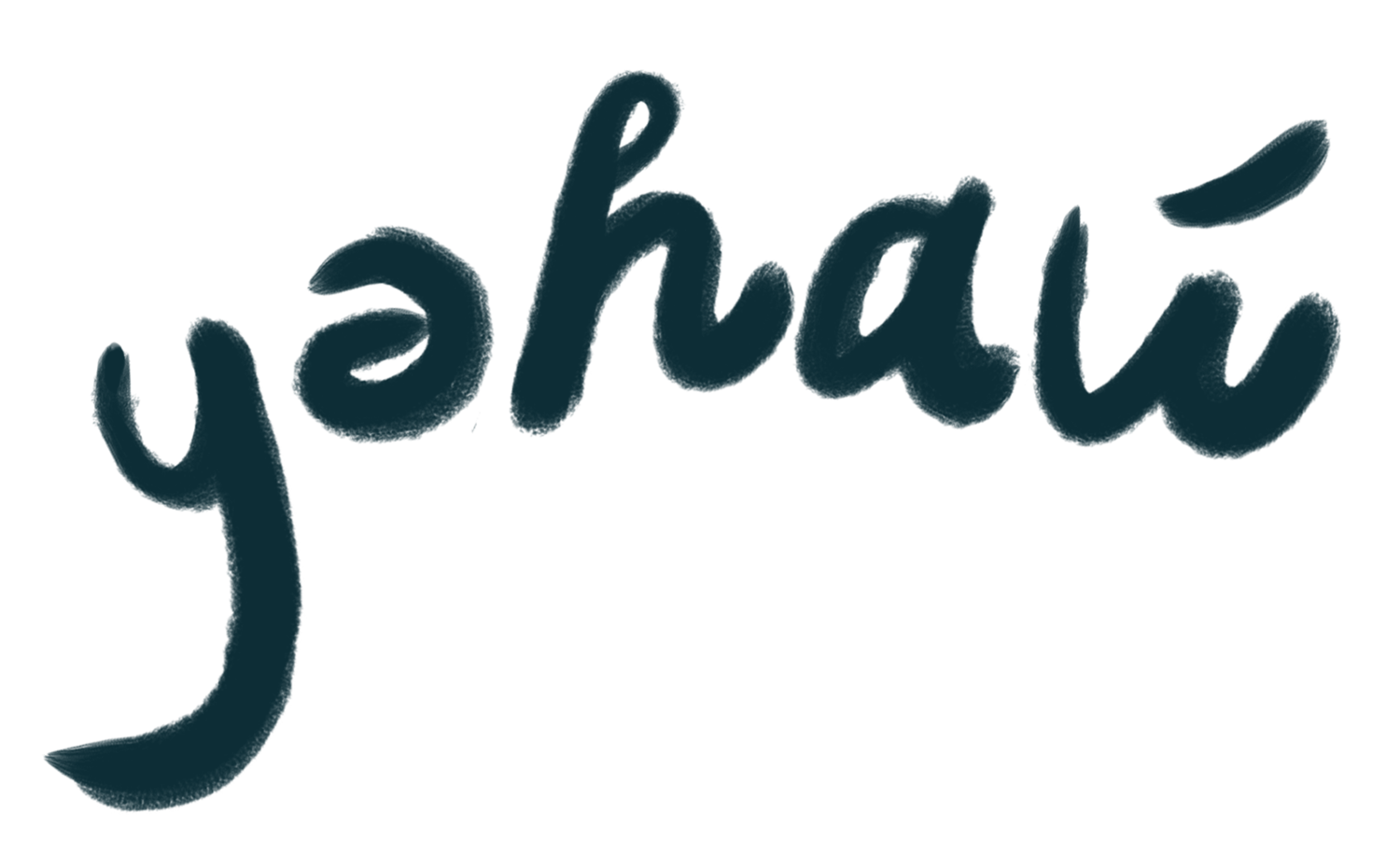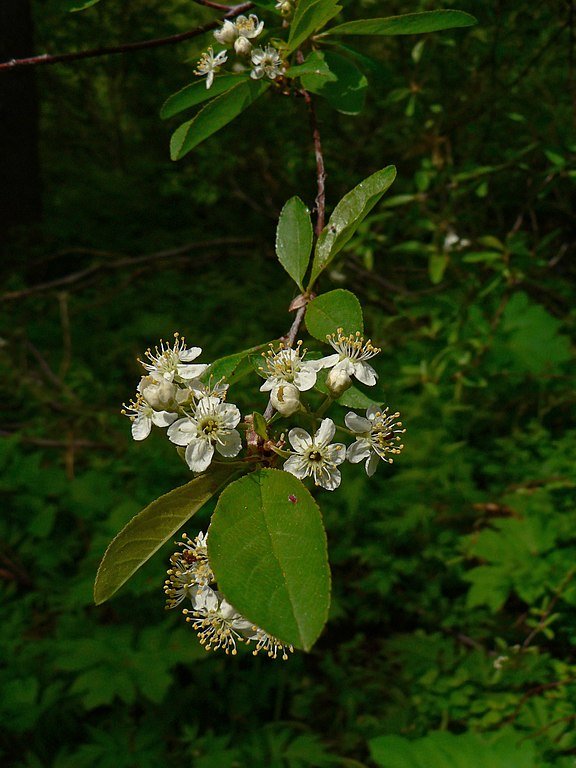Flora
SPECIES PRE-COLONIZATION
An 1861 survey found that forests around the Rainier Valley area included many of the plants and trees found on the current yəhaw̓ site, including “mixed maple, ash, alder, fir, cedar, and hemlock.” The area most likely had also been intentionally burned in order to “keep meadows and grasslands open and to encourage undergrowth such as vine maple, crab apple, salmonberry, and salal, which attracted wildlife and enhanced the prospects for hunting in the area.”
Burke Museum’s Waterlines project is a “rendering of the Seattle region in the mid-19th century, just prior to non-Indigenous settlement, created using photorealistic aerial views collaged with hand painting.” Near the yəhaw̓ site, types of land present were possibly “upland forests,” “floodplain forests” and “freshwater wetlands and bogs.”
Confirmation of other Native species is done with the help of the "Puget Sound Region: Tree Species Vulnerability Assessment."
This section includes images of specimen trees and plants to aid in visual identification. These photos were not taken on yəhaw̓’s site unless otherwise noted.
Current yəhaw̓ site during Summer 2023. (Image courtesy of yəhaw̓)
TREES
NATIVE TREE SPECIES
A number of surveys were done on the property within the recent past. They identified a mixture of native and ornamental tree species. An arborist report in 2019 said that most of the trees on-site were estimated between 15-to-20-years-old.
A Critical Areas Study from 2010 described the site’s northwest portion as “a homesite with associated landscaping and lawns,” the central and southwestern portions of the project site once had “well-managed orchards, ornamental trees, landscape gardens, lawn areas,” and the eastern portion of the project site had a “remnant upland forest community associated with the sloped portions of the drainage corridor.”
On a 2017 topographic survey, the area with slopes greater than 40% – near the creek and also the wetlands – had a lot of Big Leaf Maple and Cedar. There's a tree listed as BI; what tree it is is unclear. Numbers are also shown to indicate the diameter of each tree. On the smaller side, they were 6"in diameter; the largest is something like 20” – but that is rare. Some in the middle were around 12” or 14”.
NOBLE FIR
(Abies procera)
SITKA SPRUCE
(Picea sitchensis)
[SPR on 2017 map]
BEAKED (OR WESTERN) HAZELNUT
(Corylus cornuta)
BITTER CHERRY
(Prunus emarginata x Avium)
[CH on 2019 map]
Among the most plentiful of trees on-site, according to the 2019 arborist report, which said they ranged in condition, but that most had “developed very poor stem taper under heavy competition for sunlight with adjacent vegetation” or were covered in English ivy. “Several smaller specimens have fallen over in the past from the weight of the ivy.”
OREGON OAK
(Quercus garryana)
[OAK on 2019 map]
WESTERN RED CEDAR
(Thuja plicata)
x̌əpayac
[CE on 2017 map]
The 2016 arborist report notes a cedar (WRC) at 36”DBH.
BIG LEAF MAPLE
(Acer Macrophylum)
č’uɫac
[MAP on 2019 map]
The 2016 arborist report notes two maples at 36”DBH and 40”DBH.
The 2019 arborist report notes that they are mostly young and “have developed very poor stem taper under heavy competition for sunlight with adjacent vegetation,” but that a couple are older and more mature.
DOUGLAS FIR
(Pseudotsuga menziesii)
sčəbida
[FI on 2019 map]
RED ALDER
(Alnus rubra)
yusáwiʔac
[AL on 2017 map]
The 2019 arborist report noted that it was mostly in poor condition and that “several have died in recent years and the remainder is in vast decline,” likely due to past summer drought conditions.
WESTERN HEMLOCK
(Tsuga heterophylla)
[HEM on 2017 map]
A 5-page arborist report prepared on November 3, 2015 by Robert W. Williams and Associates Consulting Arborists described the site as vacated, with remnants of old buildings and landscape features that indicate that, in the past, the property was developed with some opulence. Style and care are also evident in an old formal landscape now overgrown and invaded primarily by non-native species; the landscape has not been maintained for many years. Several trees that are shown on the plan made in 2007 were missing and have either been removed, died, or become senescent; a number of trees have uprooted and fallen in past harsh weather events. Tree failure resulted from a combination of general decline, saturated soil conditions and exposure; the general overall impression is of neglect.”
A 9-page arborist report prepared a year later, on November 26, 2016 by the same company showed some slightly different results because they were making some corrections to the previous survey. They summarized, “Tree identification is further complicated by the fact that the area under scrutiny is not a natural site. The majority of the area was a nursery holding facility where trees were kept prior to re-location and installation in a landscape setting. The holding facility was long since abandoned and many of the plants that were held there ‘temporarily’ have bolted and forced by circumstance to adopt a different growth form. Bearing this in mind the following list represents our best attempt to identify the trees on site to the level of species as called for the correction notice.”
It is possible the plethora of non-Native species and invasive species listed below are in part due to this.
In 2019, amidst explorations of development, a November 25 arborist report by Layton Tree documented 93 trees greater than 6-inches in diameter on-site and only noted that three trees should be saved from development. They are listed in the notes below and are also related to non-Native species. It is noted that this report was intended for development and seemed to focus primarily on unhealthy trees and avoided many species which are more native to the area, for unknown reasons.
Updated survey from February 19, 2016 shows the trees on the property as well as laurel hedge, barn, and shed.
NON-NATIVE TREE SPECIES
APPLE (Pyrus spp. or Malus Sp.)
[APL on 2017 map]
ATLANTIC CEDAR (Cedrus atlantica)
BOXWOOD (Buxus sempervirens)
ENGLISH ELM (Ulmus minor)
ENGLISH YEW (Taxus baccata)
[PICTURED]
GINGKO (Gingko biloba)
PICTURED
JAPANESE CEDAR (Cryptomeria japonica)
LAWSON CYPRESS (Chamaecyparis lawsoniana)
LOCUST (Spp)
NORTHERN RED OAK (Quercas rubra)
NORWAY MAPLE (Acer platanoides)
PACIFIC YEW (Taxus brevifolia)
PIN OAK (Quercus palustris)
PLUM (Prunus spp.)
REDWOOD
[RED on 2017 map]
SAWARA CYPRESS (Chamaecyparis pisifera)
SILVER BIRCH (Betula Pendula)
WHITE OAK (Quercus alba)
[UNIDENTIFIED] FRUIT TREE
[FT on 2017 map]
[UNIDENTIFIED] DECIDUOUS TREE
[DT on 2017 map]
INVASIVE TREE SPECIES
ENGLISH HOLLY (Ilex aquifolium)
The 2019 arborist report wrote that they were mostly in fair condition.
PORTUGUESE LAUREL (Prunus lusitanica)
Among the most prevalent species on site, according to the 2019 arborist report, which wrote that they were, “young to semi-mature,” with a few that were more mature and 10-to-12-inches in diameter.
ENGLISH YEW
(Taxus baccata)
In 2019, an arborist report for a potential development wrote, “An English yew (Taxus baccata) located at the northwest portion of unit lot A will be retained. This tree is not considered an exceptional tree.”
JAPANESE CEDAR
(Cryptomeria japonica)
Listed at 30”DBH.
NORTHERN RED OAK
(Quercas rubra)
In 2019, an arborist report for a potential development wrote, “A 40” Red Oak (Quercas rubra) located at the northwest portion of unit lot A will be retained. This tree is considered an exceptional tree by Director’s Rule 16-2008.”
GINGKO
(Gingko biloba)
The 2019 report wrote that it was in good condition.
LAWSON CYPRESS
(Chamaecyparis lawsoniana)
In 2019, an arborist report for a potential development wrote, “A 13” Lawson cypress (Chamaecyparis lawsoniana) located at the northwest portion of the non-disturbance area of the parent lot will be retained. This tree is not considered an exceptional tree.”
The 2019 arborist report also wrote that the species was mostly in poor condition due to summer droughts and that many had recently died.
PIN OAK
(Quercus palustris)
EXCEPTIONAL TREE: This tree is the largest on-site and is located on the northwest corner of the property. Measured at 45”DBH, it exceeds the threshold diameter and is considered “exceptional” per Director’s Rule 16-2008. The 2015 report writes, “The tree is not without problems and has not received maintenance in the form of pruning for many years. It now contains an accumulation of deadwood, dieback, crossing duplicated limbs and is heavily covered with ivy. If retained, the tree will require pruning and ivy stripping to address these defects as well as tree protection specifications.”
PLANTS
NATIVE PLANT SPECIES
The early S'kate'lbsabs people inhabiting the area were reported to have eaten many natural food plants, including wapato bulbs and water lily found near the water. They likely also “cultivated potatoes in gardens near the confluence of the lake outlet and the Cedar River.”
In more open land areas, fern roots, berries, and crabapples were harvested, and they may have cultivated small patches of other root and bulb crops. They also intentionally practiced control burning. One such documented area, located less than three miles north of the yəhaw̓ site, may have been a “stretch of dead timber bearing east and west along the boundary between sections 22 and 23 near Seward Park.” The traditional practice, which was conducted every few years, promoted “the growth of useful plants such as berries and herbaceous shrubs that attracted browsing deer.”
INDIAN PLUM OR OSOBERRY
(Oemleria cerasiformis)
SALMONBERRY
(Rubus spectabilis)
ɫəɫaq
THIMBLEBERRY
(Rubus parviflorus)
MEDICINE, FOOD
The Critical Area Study from 2010 identified the following in the main yəhaw̓ property area.
BLEEDING HEART
(Dicentra formosa)
COMMON HORSETAIL
(Equisetum arvense)
PACIFIC BLACKBERRY
(Rubus ursinus)
STINGING NETTLE
(Urtica dioica)
VINE MAPLE
(Acer circinatum)
č’uč’uɫac
BRACKEN FERN
(Pteridium aquilium)
COMMON LADY FERN
(Athyrium filix-femina)
PACIFIC RED ELDERBERRY
(Sambucus racemosa)
SWORD FERN
(Polystichum munitum)
PLANTS NOT PICTURED
Crabapple (Pyrus spp.)
INVASIVE PLANT SPECIES
ANNUAL BLUEGRASS (Poa annua spp.)
BUTTERCUP (Ranunculus repens)
EVERGREEN BLACKBERRY (Rubus laciniatus)
HIMALAYAN BLACKBERRY (Rubus procera)
EUROPEAN HAWTHORNE (Crataegus monogyna)
The 2019 arborist report wrote that they were mostly in fair condition.
LAUREL (Laurel spp.)
CANADIAN THISTLE (Cirsium arvensis)
NON-NATIVE PLANT SPECIES
GERANIUM (Geranium spp.)
ROSE (Rosa spp.)






























